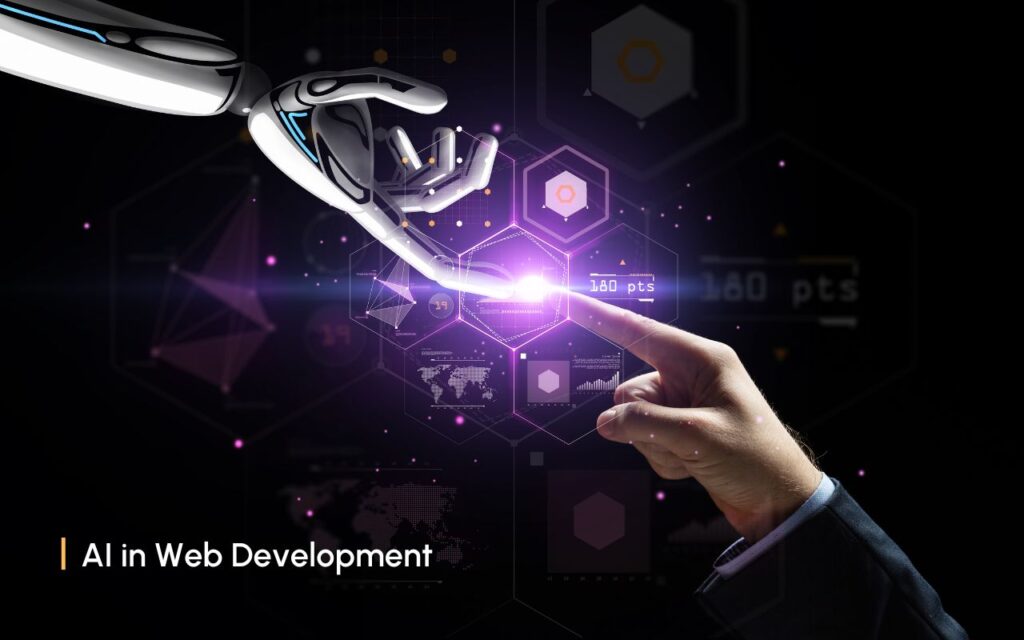

Artificial intelligence has the potential to revolutionize every aspect of our lives, Notably, from how we work and learn to how we interact with the world around us. But how do we bring these powerful technologies to the masses? The answer lies in platform and web development.
Moreover, the statement from the Microsoft CEO reinforces the need for user-friendly platforms that lower the barrier to entry for those wanting to utilize Artificial Intelligence.
We need to democratize Artificial Intelligence, making it accessible and available to businesses and individuals of all sizes.
Satya Nadella, CEO of Microsoft
Making Artificial Intelligence Accessible and User-Friendly
Artificial intelligence can be complex and intimidating for the average person. Imagine using a chat assistant powered by Artificial Intelligence to schedule appointments, translate languages in real-time, or generate creative content – all through a simple web interface. This accessibility is key to the widespread adoption and understanding capabilities of Artificial Intelligence. The global market for AI-powered chatbots is expected to reach $14.5 billion by 2027.
- Bridge the gap: Platform and web development translate complex algorithms into user-friendly interfaces and applications.
- Simple interfaces: Imagine using a chat assistant powered by Artificial Intelligence to schedule appointments, translate languages, or generate creative content – all through a simple web interface.
- Widespread adoption: Making Artificial intelligence accessible is crucial for its widespread adoption and understanding.


Building Trust and Transparency
“We need to build Artificial Intelligence systems that are not just intelligent, but also safe, understandable, and controllable”– Demis Hassabis, Co-founder and CEO of DeepMind.
Concerns about Artificial intelligence bias and ethical implications are valid and should be addressed. Platform and web development offer a way to build trust and transparency by showcasing AI’s inner workings. By visualizing data, algorithms, and decision-making processes, developers can demonstrate how AI works and address potential biases. This transparency is crucial for building public trust in AI and promoting responsible development.
MLOps Integration
In a groundbreaking move, Google, a trailblazer in artificial intelligence, implemented Machine Learning Operations (MLOps) to tackle the challenges associated with deploying and managing machine learning models at scale. This transformative shift aimed to seamlessly integrate MLOps into their development and deployment practices, borrowing from the principles of DevOps tailored for machine learning.
Real-world Impact at Google:
Google’s MLOps success story:
- Faster deployment: MLOps helped Google deploy Artificial Intelligence features across platforms faster and more reliably.
- Better collaboration: MLOps fostered teamwork between data scientists, developers, and operations teams.
- Efficient resource management: Automated scaling ensured efficient use of resources for growing workloads of Artificial Intelligence.
- Real-time monitoring: Robust monitoring allowed Google to track model performance and react to issues quickly.
- Overall improvement: MLOps streamlined Artificial intelligence deployment, leading to faster and more efficient operations.
Shaping the Future of Human-AI Interaction
Here’s how thoughtful design can foster a harmonious future:
1. Intuitive Interfaces:
- Fact: Studies show that well-designed interfaces can increase user trust and acceptance of Artificial intelligence by up to 20%.
- Example: Google Assistant’s conversational interface allows users to interact with Artificial intelligence using natural language, fostering a more natural and intuitive experience.
2. User-Centered Design:
- Fact: Artificial intelligence systems designed around human needs and limitations lead to higher user satisfaction and positive emotional responses.
- Example: Apple’s Voice Control feature allows users to personalize their interactions with Artificial intelligence by adjusting settings like voice speed and pronunciation.
3. Transparency and Explainability:
- Fact: 72% of consumers believe Artificial Intelligence companies should explain how their algorithms make decisions.
- Example: IBM’s Artificial Intelligence Fairness 360 toolkit allows developers to assess and mitigate bias in AI models, promoting trust and accountability.
4. Shared Control and Collaboration:
- Fact: Artificial Intelligence systems that allow users to maintain control and collaborate with the technology lead to higher levels of engagement and creativity.
- Example: Co-creation platforms like RunwayML allow users to collaborate with Artificial Intelligence tools to design and generate creative content, blurring the lines between human and machine creativity.
5. Ethical Considerations:
- Fact: 84% of consumers believe it is important for Artificial Intelligence companies to act ethically and responsibly.
- Example: Microsoft’s Artificial Intelligence for Good program focuses on developing Artificial Intelligence solutions that address global challenges and promote social good, demonstrating ethical considerations in AI development.
In our commitment to innovation, we leverage the power of AI in digital marketing. From personalized content recommendations to data-driven insights, our approach transforms the landscape of online engagement. Discover how Artificial Intelligence is reshaping the future of digital marketing, ensuring tailored strategies for success.
In the evolving landscape of human-AI interaction, integrating design principles is both a creative choice and a moral imperative. By prioritizing intuitive interfaces, user-centred design, transparency, collaboration, and ethics, developers chart a course for a harmonious future, enriching lives and fostering positive societal impact.

